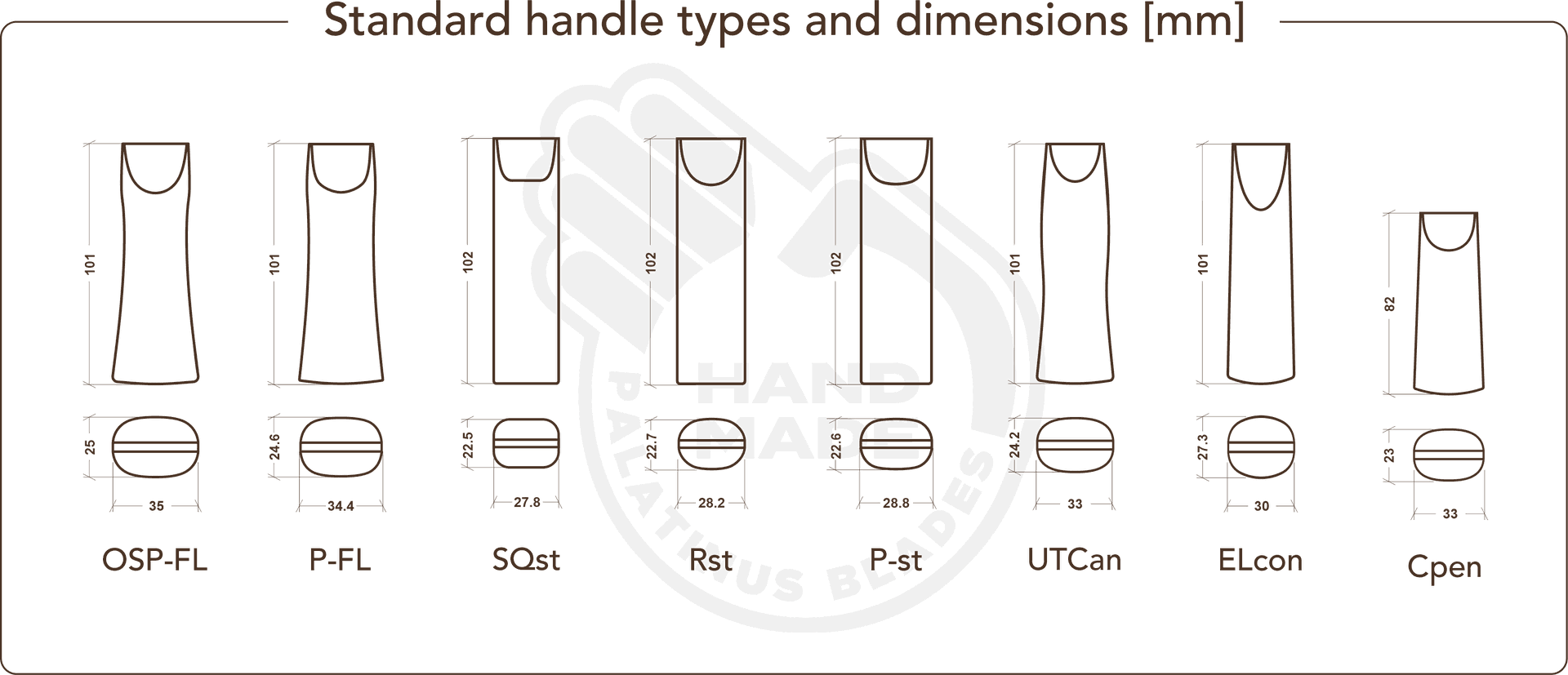The material of the handle plays an essential role in shaping the blade's characteristics. It directly affects the blade’s weight, balance, speed, and vibration feedback, ultimately influencing the player's style and overall feel.
- Harder and heavier materials:
- Firmly secure the blade face, enhancing its stability and increasing overall speed.
- Shift the balance toward the handle, supporting a more controlled, tactical playing style.
For topspin-oriented offensive play, hollowing out inside the handle reduces its weight, shifting the balance toward the blade’s head.
Example:
The legendary Stiga Ehrlich handle design featured a hard wood handle combined with an all-round blade. Its weight was purposefully reduced through drilled holes in the handle and internal hollowing, along with beveled edges at the handle's end, shifting the balance toward the blade’s head. This design not only provided functional advantages but also became iconic for its unique aesthetic.
- Softer and lighter materials:
- Slightly reduce blade speed while increasing control.
- Shift the balance toward the blade’s head, enhancing spin-oriented, offensive play.
If a more centered or handle balance is desired, this can be achieved by reducing blade weight or adjusting the head shape.
We’re committed to providing prompt and effective solutions to ensure your satisfaction.


